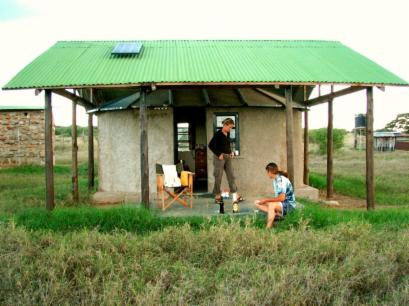How to Get Involved

- Help support our research and conservation. You may donate through African Conservation Fund, a U.S. registered non-profit charity. Click the button below to donate now through Paypal - it's easy and fast and you don't have to have a Paypal account. Or click here to contact ACF for instructions on writing a check. Donations in the U.S. are tax-deductible.
- Become an intern for 12 months or more. Click here to download a PDF description of our internship program - see also more information below.
- Submit a graduate or post graduate research proposal by email.
The Research Team
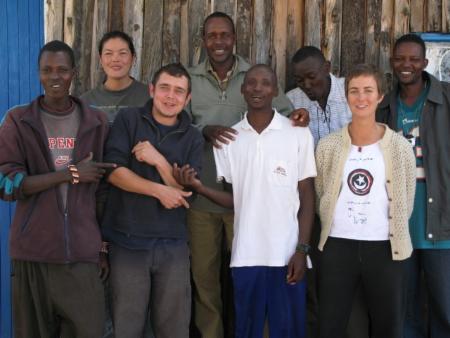
(left to right) John Kenge, Aliya Bauer, Graham Stirling, Francis ole Molo, Patrick Mwangi, Butu Masek, Jen Douthwaite, James K'ingau
UNBP was the first primate research project in Kenya to employ local research assistants. The philosophy was to build a team where Kenyans achieved more and more responsibility for running the Project and for more sophisticated data collection and research projects. Starting with 1 assistant in 1979, the team grew to as many as 8 field assistants from 1990 to 2001. In addition to the field team, four Kenyans work full time in a computer/data lab in Nairobi doing data input and analysis.
Recently, UNBP has switched to a different approach. UNBP is accepting more student volunteers from abroad as part of the team. As in the past, appropriate Masters and PhD projects are welcome. Kenyan research assistants continue to be involved both collecting data and in community and conservation projects.
What is expected of volunteers
As you will see, a great deal of investment is a minimum to make a volunteer a reliable member of UNBP. This means that a commitment of 12 months is required. If, during the first few months you decide you are not suited to this work, you are free to go. However, once the 3 month period passes, you will be expected to complete the remaining 9 months. We can discuss the possibility of extending longer than 12 months as appropriate. Please view / download this PDF for additional information.
UNBP collects extensive background and monitoring data on demographic, social and ecological parameters in addition to special studies. The focus has been on three groups until recently when two fused to become one social unit. Then one fissioned. We now closely watch three troops but we also monitor relations with adjacent baboon groups and do area-wide baboon censuses on a seasonal basis.
- Field Data
- Basic demographic information
- Female sexual state
- Animal condition
- Ranging pattern
- Activity and diet scans
- Social scans
- Consort records
- Ad lib notes
- Predation by baboons
- Intertroop encounters
- Predator sightings
- Ecological monitoring of the vegetation and relevant other variables
- Special studies (which recently have included)
- Troop movements
- The process of fusion
- Ontogeny of social awareness
- Sexual consorts
- Friendships between males, mothers and infants
- Grooming and female tolerance and feeding competition
A field day
The three focal troops are 5-10km and 20-25km away from camp. The research day is divided into two sections with complete coverage (from 6:30 am to 6:15 pm) three days per week and on as many other days as staffing permits. Otherwise the day covers the morning period from 6:30 am to 1 pm. The baboons are reached by motorcycle or by a four-wheel drive vehicle (depending on how many people are going out) and then followed on foot. This means a long or short midday walk, depending on the troop’s movements, back to where the vehicles were left.
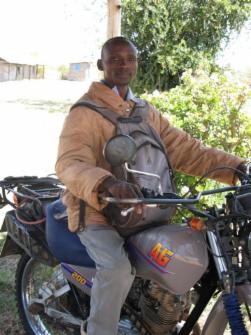
Training
It takes up to three months to learn the animals and enough of the behavior and ecology to be able to collect reliable data. During this time, a volunteer will be familiarized with the various projects and the conservation program. He or she will be expected to help with data analysis, give lectures to primary schools and to use any other skills that are applicable to the work that UNBP does.
Data responsibilities
Once training is complete, the volunteer will be expected to help with the Project data collection during the remainder of his or her stay. However during the last three months, you will be encouraged to develop your own project (in consultation with Strum) in addition to doing Project data collection. Your own work could result in a publication and/or be the preliminaries for a PhD thesis.
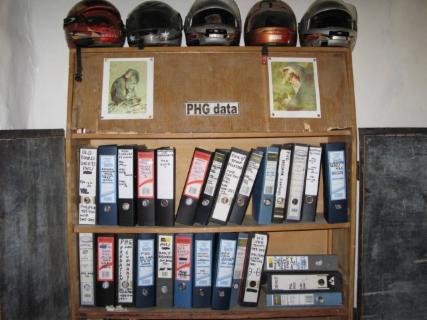
You will also be expected to help with Project records and do some tallies or analysis as appropriate.
Other Information
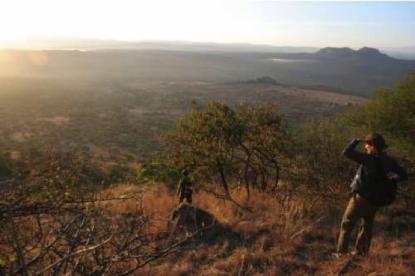
The field site is on the eastern Laikipia Plateau about 100 km north of Mt. Kenya. It is high altitude savanna/bushland with an average of 350-400mm rainfall per year. There are two rainy seasons and two dry seasons. Drought is common and presents a challenge for the baboons and the Masaai pastoralists who live in the area. Mt Kenya is visible on most days. The landscape is spectacular with a full complement of wildlife including lions, cheetah, leopard, hyena, wild dogs, elephants, two kinds of zebra, giraffe, buffalo, gerenuk, impala, etc. who are resident throughout the year but seasonally abundant.
Although we walk with the baboons without a vehicle nearby, we take are vigilant. The baboons are our best watchdogs. There have not been any injuries or problems involving wildlife during our 21 years at this site. Housing is provided in comfortable rondovels (below) with solar electricity.
